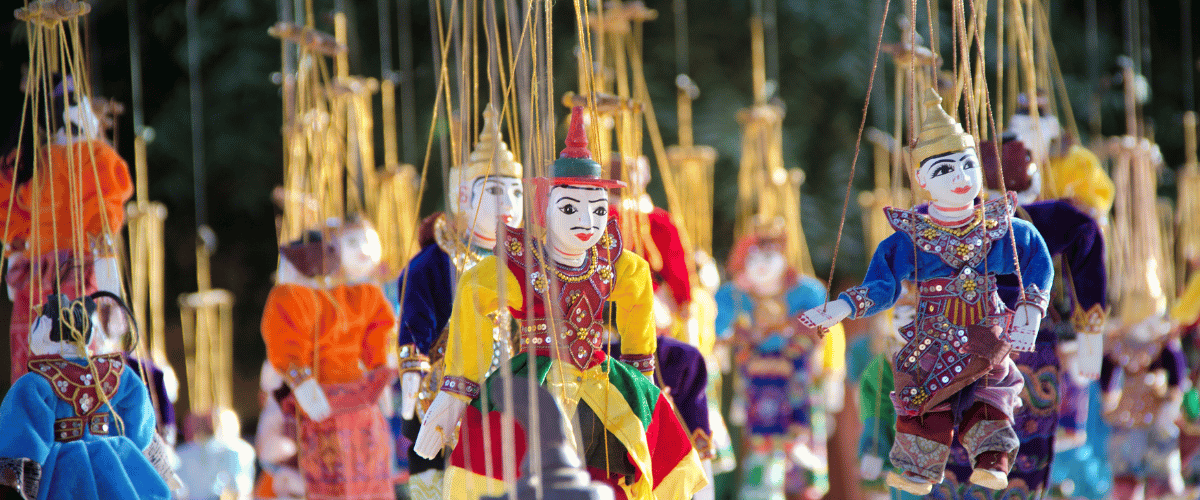Ready to explore some awesome places to visit in Myanmar?
I’ve been thinking if you ever get the chance to go, the places to visit in Myanmar and the things to do in Myanmar really stay with you It’s not just temples and markets it’s the calm moments the colors the people It just feels different in the best way

Travel Insurance
Via nomads

Get eVisa
via Horved
Table of Contents
What unique activities can one do while in Myanmar?
Attend the local festivities and appreciate the Myanmar culture as one explores the different streets. Additionally, one can have fun exploring the marketplace in Yangon, the archeological sites in Mandalay, as well as the rich architecture in the city.
What culture releated activities are there in Myanmar?
Enjoying watching the calendar flip over the Bagan ancient temples or watching monks practicing Buddhism in the monastery. Along with those two, traditional festivals celebrating the heritage of Myanmar also crack the list.
Which of the Myanmar family friendly activities do you recommend?
Watching the foreign and local generation experience Shwedagon Pagoda is a must. Nothing can beat that.
What food does Mohinga pair well with?
Beside tea leaf salad, there is plenty of street food, but Mohinga is infact the best match because as much as it is the national dish, it is paired with almost everything one can think of.
In which parts of Myanmar are wellness retreats located?
Inle Lake has scenic resorts that are less populated where one can enjoy spa and massage meant to clear your head, as well as treat your body.
Which season does Myanmar experience less rainfall?
For outdoor events, especially sight seeing, the months of November to February are perfect. Without being too cold or hot, both the temperature and the rainfall are at ideal levels.
Which Myanmar off-the-beaten-path villages are best for rural tourism?
Tribal life is well-preserved in remote places such as Chin State, Putao, and Hsipaw, so you can mingle with the locals away from the tourist paths.
Which traditional festivals in Myanmar can be enjoyed by tourists?
The festivals with feasts are the most enjoyable like the Thingyan water festival, Tazaungdaing lights festival and celebrations at Shwedagon Pagoda.




Find Hotles
via booking,com

Find Hostels
via Hostelworld

Find Rental Car
via sunny travel

Find Flights
via skyscaner

Book A Bus
via 12Go

Get Visa
via ivisa

Get Travel Insurance
via heymenda

How To Pack
our tips
Modern Cities & Culture in Myanmar
Top Cities and What to Do
Jakarta: Fast, Bold, and Buzzing
Give your taste buds a treat by visiting Grand Indonesia for a vending machine-assisted shop or do old-school shopping at Pasar Baru. Grab architectural colonials coupled with entertaining live music at the inviting museums of Kota Tua (Old Town). Grab a signature coffee blend and enjoy SCBD’s skyline from their rooftop cafes.
Yogyakarta: A Center of Culture with a Refreshing Twist
Step into Yogyakarta’s royal past as you explore the Kraton Palace and the enchanting Taman Sari Water Castle. Dive into the thriving art ecosystem surrounding Malioboro and Prawirotaman, where creativity pulses through galleries, street art, and local studios. Epic traditional dance performances at Ramayana Ballet (Prambanan backdrop = epic)
Bandung: Chill Out City of Java
- Indie shops and factory outlets on Jalan Riau
- Café-hopping in Dago and Lembang
- Braga Street: Jazz bars, colonial Vibe, and street murals
Denpasar & Ubud (Bali)
Denpasar: the real bali. The local nightlife, temples, and markets.
Ubud: Artist, Yogi, and chef unite to create a city in the jungle with heavy spiritual undertones.
One of a Kind Urban Experiences
Jakarta art: Macan Museum and graffiti tours around Kemang
Street art in Yogyakarta: Mural poetry painted onto the walls of mundane alleys.
Design in Bandung: Architecture and even alternative comic books.
The vibe of digital nomads in Bali: Canggu’s coworking spaces resemble beach resorts.

FAQ- Urban Culture in Indonesia
Pro Tip
Be sure to download GoJek it’s a must-have travel hack for navigating urban Indonesia, offering everything from transportation and food delivery to massage services and even concert ticket bookings, all in one convenient app
Conclusion: The Cities Are Cultural Breathing Life.
Indonesia That Inspires and Transforms
Indonesia’s cities aren’t just places on a map; they’re living stories waiting to be experienced. Sip strong kopi in Bandung, feel the rhythm of Jakarta’s nightlife, or reconnect with stillness in the lush calm of Ubud. Each moment of urban travel in Indonesia blends tradition, art, and energy in unforgettable ways. You’ll arrive curious and leave inspired because these cities don’t just welcome you, they change you.
Modern Cities & Culture in Myanmar
Intro: Cities Abound With Culture and Stories (80 words)
Myanma’s urban centers serve as more than just waypoints, their rich ethnic tapestry is complemented by multifaceted cultures and dynamic street life. Unlike in 2015, Mandalay and Yangon have preserved their traditional charm amidst rapid modernization. Travelers are greeted with a reflective and energetic world comprising of colonial tea shops as well as buzzing markets. For those seeking genuine encounters, Myanmar’s cities are replete with urban spirituality, history, and rich lived life, rendering Myanmar unforgettable.
Steppe Highlights Otherwise Noted
Yangon: One of the Main Capitals of Culture
Visit Shwedagon Pagoda, the most sacred site in Myanmar, at sunset for a breathtaking view and unparalleled experience.
Come across and explore the downtown colonial area with its British-era buildings and hawkers.
Do not miss the Handicraft, Art, and Traditioanlly Dressed pieces in Bogyoke Aung San Markey.
Mandalay: The Most Recent Capital of the Royals
Be sure to make the climb up Mandalay Hill—where sweeping views meet a peaceful, spiritual atmosphere that’s worth every step.
Ride especially in the early morning to U Bein Bridge, the longest teak footbridge of the world.
Get lost at Zegyo Market for inexpensive fruits and vegetables, snacks, and textiles.
Cultural Touches
Have tea at a regional Teahouse, the Myanmar social meeting point.
Join the slow ride on Yangon Circular Train to view the city center and periphery.
Experience traditional storytelling by watching a puppet show.
FAQ – Urban Travel in Myanmar
Is Yangon walkable?
Yes, the heritage core of the city can be explored on foot.
Can credit cards be used?
Only in the larger cities. Smaller businesses still prefer cash.
What language is spoken?
Although Burmese is the official language, English is widely spoken and easily understood in most parts of the city.
Did You Know?
Yangon is home to some of Southeast Asia’s most impressive and well-preserved colonial architecture.
Pro tip
Visitors should wear long skirts or pants, and long-sleeved shirts to cover their shoulders. This becomes especially essential when exploring sacred or religious places.
Conclusion: Layers of Legacy (50 words)
The country’s cities serve as living mosaics of tradition and modernity. From revered pagodas to bustling street intersections, they provide profound insight into Myanmar’s essence. Relish every moment — whether it is a meditative moment at a shrine or savoring a steaming bowl of noodles at a curbside stall.

History & Heritage in Myanmar
Top Cities and What to Do
Jakarta: Fast, Bold, and Buzzing
Give your taste buds a treat by visiting Grand Indonesia for a vending machine-assisted shop or do old-school shopping at Pasar Baru. Grab architectural colonials coupled with entertaining live music at the inviting museums of Kota Tua (Old Town). Grab a signature coffee blend and enjoy SCBD’s skyline from their rooftop cafes.
Yogyakarta: A Center of Culture with a Refreshing Twist
Step into Yogyakarta’s royal past as you explore the Kraton Palace and the enchanting Taman Sari Water Castle. Dive into the thriving art ecosystem surrounding Malioboro and Prawirotaman, where creativity pulses through galleries, street art, and local studios. Epic traditional dance performances at Ramayana Ballet (Prambanan backdrop = epic)
Bandung: Chill Out City of Java
- Indie shops and factory outlets on Jalan Riau
- Café-hopping in Dago and Lembang
- Braga Street: Jazz bars, colonial Vibe, and street murals
Denpasar & Ubud (Bali)
Denpasar: the real bali. The local nightlife, temples, and markets.
Ubud: Artist, Yogi, and chef unite to create a city in the jungle with heavy spiritual undertones.
One of a Kind Urban Experiences
Jakarta art: Macan Museum and graffiti tours around Kemang
Street art in Yogyakarta: Mural poetry painted onto the walls of mundane alleys.
Design in Bandung: Architecture and even alternative comic books.
The vibe of digital nomads in Bali: Canggu’s coworking spaces resemble beach resorts.

FAQ- Urban Culture in Indonesia
Pro Tip
Be sure to download GoJek it’s a must-have travel hack for navigating urban Indonesia, offering everything from transportation and food delivery to massage services and even concert ticket bookings, all in one convenient app
Conclusion: The Cities Are Cultural Breathing Life.
Indonesia That Inspires and Transforms
Indonesia’s cities aren’t just places on a map; they’re living stories waiting to be experienced. Sip strong kopi in Bandung, feel the rhythm of Jakarta’s nightlife, or reconnect with stillness in the lush calm of Ubud. Each moment of urban travel in Indonesia blends tradition, art, and energy in unforgettable ways. You’ll arrive curious and leave inspired because these cities don’t just welcome you, they change you.
History & Heritage in Myanmar
Intro: Enduring Spirituality and Holistic Heritage (80 words)
Temples and ancient kingdoms reflect Myanmar’s intertwined spirituality and heritage. The country’s storied past offers travelers a glimpse into the unfolding chronicles of civilization, such as in Bagan’s plains or through calm monasterial routines. With increasing accessibility in 2025, the country’s exploration of centuries-old Buddhist traditions, royal legacies, and architectural marvels becomes easier. Stalwarts of enduring stupas and narratives of fortitude tell an epic folk tale of the Myanmar’s soul deeply enshrined in its heritage.
Top Historical Sites
Bagan Archaeological Zone
Over 2,000 identified temples and pagodas offer an aerial view through hot-air balloon rides and e-bikes.
Top highlights include Ananda Temple, the massive Dhammayangyi Temple, and the iconic Shwesandaw Pagoda.
Mingun & Sagaing (Near Mandalay)
Visit and explore Mingun Pahtodawgyi, an unfinished colossal stupa, and the world’s one of the largest bell, the Mingun Bell.
Take a river crossing to discover Sagaing — a peaceful hillside dotted with gleaming white and golden stupas.
Shwedagon Pagoda (Yangon)
Claims to be over 2,500 years old, bestowing timelessness to stiff historic believability alongside spirituality.
Cultural Practices & Traditions
Dawn visits to monasteries allow one to participate in daily alms-giving rituals.
Learn about Festive days in the Buddhist calendar like Thadingyut (Festival of Lights).
Delve into age-old artistry, from the detailed lacquerware of Bagan to the delicate tapestry weaving traditions of Mandalay.
Did You Know?
Bagan is the epicenter of the ancient Pagan Kingdom, which was the first polity in the region to bring together what is present-day Myanmar.
Pro Tip
Consider hiring a local guide at the temple complexes; their expertise provides profound context that will enrich your visit.
FAQ – History & Heritage
Is Bagan worth visiting in 2025?
Absolutely! Restoration has continued post-pandemic, and the site is more visitor friendly than ever.
Do I need permits to visit historic areas?
Most major sites are open without permits, though some restricted areas may require special permission.
Conclusion: Where the Past Speaks (50 words)
In Myanmar, history is not displayed behind glass; it is alive and pulsating. Wander the temple ruins at sunrise or sit during a monk’s chant, and time seems suspended. For those who cherish heritage or seek spirituality, Myanmar offers not just a journey through spaces but through ages.

Food & Drink in Myanmar
Top Cities and What to Do
Jakarta: Fast, Bold, and Buzzing
Give your taste buds a treat by visiting Grand Indonesia for a vending machine-assisted shop or do old-school shopping at Pasar Baru. Grab architectural colonials coupled with entertaining live music at the inviting museums of Kota Tua (Old Town). Grab a signature coffee blend and enjoy SCBD’s skyline from their rooftop cafes.
Yogyakarta: A Center of Culture with a Refreshing Twist
Step into Yogyakarta’s royal past as you explore the Kraton Palace and the enchanting Taman Sari Water Castle. Dive into the thriving art ecosystem surrounding Malioboro and Prawirotaman, where creativity pulses through galleries, street art, and local studios. Epic traditional dance performances at Ramayana Ballet (Prambanan backdrop = epic)
Bandung: Chill Out City of Java
- Indie shops and factory outlets on Jalan Riau
- Café-hopping in Dago and Lembang
- Braga Street: Jazz bars, colonial Vibe, and street murals
Denpasar & Ubud (Bali)
Denpasar: the real bali. The local nightlife, temples, and markets.
Ubud: Artist, Yogi, and chef unite to create a city in the jungle with heavy spiritual undertones.
One of a Kind Urban Experiences
Jakarta art: Macan Museum and graffiti tours around Kemang
Street art in Yogyakarta: Mural poetry painted onto the walls of mundane alleys.
Design in Bandung: Architecture and even alternative comic books.
The vibe of digital nomads in Bali: Canggu’s coworking spaces resemble beach resorts.

FAQ- Urban Culture in Indonesia
Pro Tip
Be sure to download GoJek it’s a must-have travel hack for navigating urban Indonesia, offering everything from transportation and food delivery to massage services and even concert ticket bookings, all in one convenient app
Conclusion: The Cities Are Cultural Breathing Life.
Indonesia That Inspires and Transforms
Indonesia’s cities aren’t just places on a map; they’re living stories waiting to be experienced. Sip strong kopi in Bandung, feel the rhythm of Jakarta’s nightlife, or reconnect with stillness in the lush calm of Ubud. Each moment of urban travel in Indonesia blends tradition, art, and energy in unforgettable ways. You’ll arrive curious and leave inspired because these cities don’t just welcome you, they change you.
Food & Drink in Myanmar
Intro: Flavors of Faith and Family (80 words)
Myanmar’s culinary landscape blends the flavors of its diverse ethnic heritage, Buddhist influences, and the rich offerings of its tropical environment. Come 2025, one can find there is a story behind every single bite—be it a market breakfast in Mandalay or a home-cooked meal from Shan State. Myanmar food such as noodle soups and delicately fermented dishes is rustic, bold, and deeply satisfying. Myanmar is not just nfood tourism-destination, but offers nourishments steeped in multigenerational migrations, religion, and community.
Must-Try Dishes
Mohinga – Myanmar’s national dish
A cherished breakfast staple, this dish combines tender rice noodles with a rich, flavorful fish soup—perfect for beginning the day on a comforting note. Savory, spiced, and comforting.
Tea Leaf Salad (Lahpet Thoke)
Fermented tea leaves with nuts, peas and tomatoes. The dish is tangy, crunchy, and addictive in more than one ways.
Shan Noodles
Prominent in eastern Myanmar, rice noodles served in a light broth made with tomatoes, chicken or pork.
Burmese Curries
These rich explosively tasting oily curries are served with dozens of side dishes that accompany it’s burst and explosion of taste including various salads, pickles, and soups.
Mont Lin Ma Yar (“Husband and Wife Snacks”)
Crunchy street food consisting of savory crisp pancakes filled with quail eggs, scallions, and bean sprouts.**Drink Culture**
Enjoy a warm cup of creamy, sweet Burmese tea, a staple at local tea houses across the country.
You may taste palm wine in the countryside or find sugarcane juice at vendor stalls.
Where to Eat
Street markets serve breakfast and light meals.
Teahouses offer a blend of café, community center, and a genuine glimpse into daily life.
Food tours are offered in Yangon and Mandalay, with English speaking guides.
Pro Tip
People tend to eat using their right hand, scooping up rice with curry and side dishes. Though utensils are provided in most restaurants, it is still common to eat with one’s hands—give it a shot!
FAQ—Food & Drink
Is Myanmar food spicy?
It can be, but focus more on flavors than heat. Dishes are generally rich, oily, and abundant in umami.
Is street food safe to eat?
Yes, but aim for busy stalls that prepare items in bulk and freshly cooked foods. Avoid raw vegetables unless you trust the vendor.
Did you know?
Fermented tea, a unique form of tea popular in Myanmar, is one of the rare instances in the world where tea leaves are consumed rather than brewed. Myanmar’s love for tea predates the British era, woven into daily life long before colonial influences arrived.
Conclusion: A Nation Served on a Plate (50 words)
In Myanmar, food serves as a link between the entire populace and their culture, prayers, and history. From blazing innovative salads at teahouses to mohinga served in the early hours, the nation’s rich historical and cultural narrative is reflected in its culinary offerings shaped through intricate and steeped traditions.
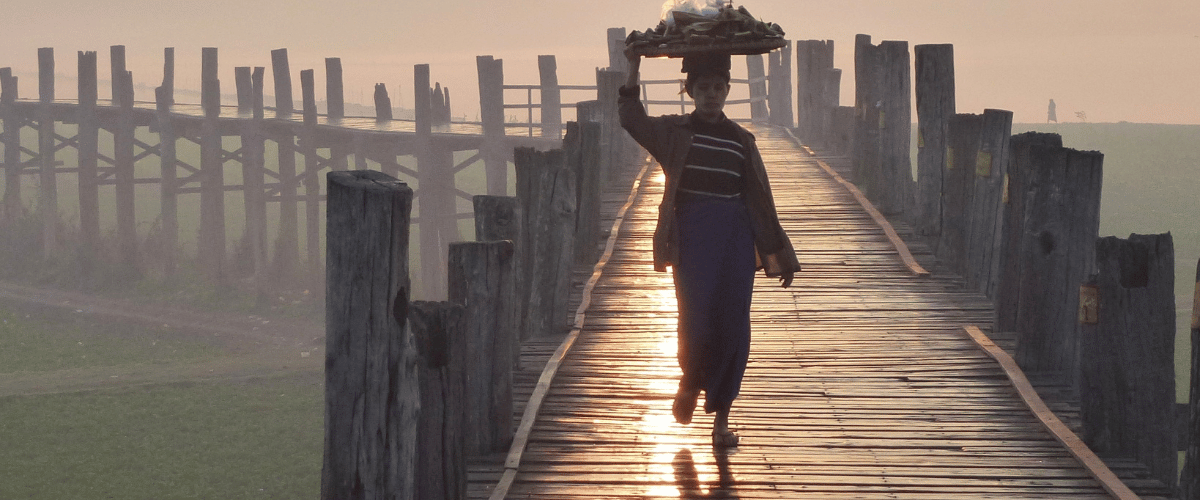
Wellness & Relaxation in Myanmar
Top Cities and What to Do
Jakarta: Fast, Bold, and Buzzing
Give your taste buds a treat by visiting Grand Indonesia for a vending machine-assisted shop or do old-school shopping at Pasar Baru. Grab architectural colonials coupled with entertaining live music at the inviting museums of Kota Tua (Old Town). Grab a signature coffee blend and enjoy SCBD’s skyline from their rooftop cafes.
Yogyakarta: A Center of Culture with a Refreshing Twist
Step into Yogyakarta’s royal past as you explore the Kraton Palace and the enchanting Taman Sari Water Castle. Dive into the thriving art ecosystem surrounding Malioboro and Prawirotaman, where creativity pulses through galleries, street art, and local studios. Epic traditional dance performances at Ramayana Ballet (Prambanan backdrop = epic)
Bandung: Chill Out City of Java
- Indie shops and factory outlets on Jalan Riau
- Café-hopping in Dago and Lembang
- Braga Street: Jazz bars, colonial Vibe, and street murals
Denpasar & Ubud (Bali)
Denpasar: the real bali. The local nightlife, temples, and markets.
Ubud: Artist, Yogi, and chef unite to create a city in the jungle with heavy spiritual undertones.
One of a Kind Urban Experiences
Jakarta art: Macan Museum and graffiti tours around Kemang
Street art in Yogyakarta: Mural poetry painted onto the walls of mundane alleys.
Design in Bandung: Architecture and even alternative comic books.
The vibe of digital nomads in Bali: Canggu’s coworking spaces resemble beach resorts.

FAQ- Urban Culture in Indonesia
Pro Tip
Be sure to download GoJek it’s a must-have travel hack for navigating urban Indonesia, offering everything from transportation and food delivery to massage services and even concert ticket bookings, all in one convenient app
Conclusion: The Cities Are Cultural Breathing Life.
Indonesia That Inspires and Transforms
Indonesia’s cities aren’t just places on a map; they’re living stories waiting to be experienced. Sip strong kopi in Bandung, feel the rhythm of Jakarta’s nightlife, or reconnect with stillness in the lush calm of Ubud. Each moment of urban travel in Indonesia blends tradition, art, and energy in unforgettable ways. You’ll arrive curious and leave inspired because these cities don’t just welcome you, they change you.
Wellness & Relaxation in Myanmar
Intro: Tranquility Beyond Temples (80 words)
Myanmar is celebrated for its spiritual stillness and in 2025, that tranquility is available for wellness travel. Meditation in age-old monasteries, lakeside resort relaxation, and receiving traditional massages are but a few examples where Myanmar’s calm transcends the physically quiet. Here, wellness is still rooted in nature and cultural heritage, which in turn makes life mindfully simpler. Healing through simplicity can be found from Shan State hills to Inle Lake shores.
Wellness Hotspots
Inle Lake – Serene waters and holistic retreats
Participate in yoga classes at sunrise and enjoy canoe rides, as well as lakeside spa treatments.
Experience herbal steam baths or massages with local herbal oils.
Bagan – Spiritual and scenic peace
Practice early morning meditations with sightseeing among the ancient pagodas.
Wellness packages and quiet reflection gardens are often available in boutique hotels.
Ngapali Beach – Great location for sand and serene waters.
Secluded beaches with pristine white sands offer the ultimate escape for relaxation and renewal.
Spas are offered at resorts which include yoga at sunset, as well as slow-paced lifestyles and living.
Traditional Treatments
Burmese Thanaka facials – A natural cooling and cleansing paste made from ground bark and contemporary facials.
Local massages – Massage methods are more focused on circulation and relaxation compared to deep tissue work.
Herbal steam rooms – Common in hilly regions, these rooms are created with local hill herbs.
Mindfulness & Spiritual Retreats
Travelers can participate in short-term meditation retreats at some monasteries in Yangon or Bago.
It is encouraged informally join walking meditation which is done in the temple compound.
Pro Tip
Donation-based meditation stays are offered by some monasteries. This requires a respectful attitude, modest clothing, complete silence, and silence. Your hotel or local guide can provide suggestions.
FAQ – Wellness in Myanmar
Are spa services expensive?
Spa and wellness services are much more affordable in comparison to western prices, especially in locally-run resorts.
Do I need to book a retreat in advance?
For sought after locations such as Inle Lake or Ngapali, advance booking is recommended, particularly during peak season (November–February).
Did You Know?
The Ayurvedic system of medicine practiced in Myanmar today is a legacy received from ancient Indian civilization and is based on age-old practices from trade routes bringing in Indian influence.
Conclusion: “Peace That Lingers” (50 words)
Wellness in Myanmar starts with silence and sincerity. Travelers experience restful nourishment through barefoot strolls in pagodas and serene lakeside afternoons. Here, wellness isn’t retreating from reality; instead it’s an embrace of the essential.
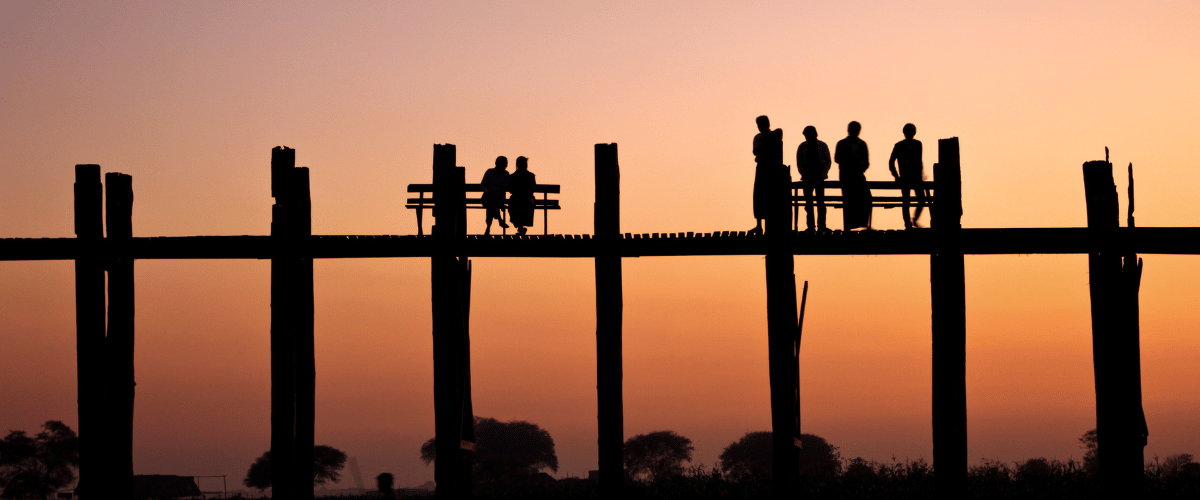
Nature & Seasons in Myanmar
Top Cities and What to Do
Jakarta: Fast, Bold, and Buzzing
Give your taste buds a treat by visiting Grand Indonesia for a vending machine-assisted shop or do old-school shopping at Pasar Baru. Grab architectural colonials coupled with entertaining live music at the inviting museums of Kota Tua (Old Town). Grab a signature coffee blend and enjoy SCBD’s skyline from their rooftop cafes.
Yogyakarta: A Center of Culture with a Refreshing Twist
Step into Yogyakarta’s royal past as you explore the Kraton Palace and the enchanting Taman Sari Water Castle. Dive into the thriving art ecosystem surrounding Malioboro and Prawirotaman, where creativity pulses through galleries, street art, and local studios. Epic traditional dance performances at Ramayana Ballet (Prambanan backdrop = epic)
Bandung: Chill Out City of Java
- Indie shops and factory outlets on Jalan Riau
- Café-hopping in Dago and Lembang
- Braga Street: Jazz bars, colonial Vibe, and street murals
Denpasar & Ubud (Bali)
Denpasar: the real bali. The local nightlife, temples, and markets.
Ubud: Artist, Yogi, and chef unite to create a city in the jungle with heavy spiritual undertones.
One of a Kind Urban Experiences
Jakarta art: Macan Museum and graffiti tours around Kemang
Street art in Yogyakarta: Mural poetry painted onto the walls of mundane alleys.
Design in Bandung: Architecture and even alternative comic books.
The vibe of digital nomads in Bali: Canggu’s coworking spaces resemble beach resorts.

FAQ- Urban Culture in Indonesia
Pro Tip
Be sure to download GoJek it’s a must-have travel hack for navigating urban Indonesia, offering everything from transportation and food delivery to massage services and even concert ticket bookings, all in one convenient app
Conclusion: The Cities Are Cultural Breathing Life.
Indonesia That Inspires and Transforms
Indonesia’s cities aren’t just places on a map; they’re living stories waiting to be experienced. Sip strong kopi in Bandung, feel the rhythm of Jakarta’s nightlife, or reconnect with stillness in the lush calm of Ubud. Each moment of urban travel in Indonesia blends tradition, art, and energy in unforgettable ways. You’ll arrive curious and leave inspired because these cities don’t just welcome you, they change you.
Nature & Seasons in Myanmar
Intro: Where Nature Sets the Pace (80 words)
Myanmar’s seasons set the pace of life, shifting the scenery from sun-drenched dry plains to the lush, vibrant greens of the monsoon months. In 2025, knowing when to go and where to visit is important for every traveler looking for an enriching experience. Nature lovers will find mist-enshrouded hills to trek, scenic lakes to sail across, and ancient temples to visit under clear skies. From the tropical coasts to the temperate highlands, the country is marked by diverse climate zones that offer differing experiences throughout the year. Embark on an adventure through nature’s bounty and let the seasons guide you.
Seasonal Travel Guide
Dry Season (Nov – Feb) – Optimal for site visits and outdoor engagement
Preferred period for visiting Bagan, Mandalay, and Inle Lake.
Early mornings are cool, and sunny afternoons are perfect; very popular with tourists.
Hot Season (Mar – May) – Warm with clear skies
Perfect time to unwind on the sun-kissed shores of Ngapali or explore the serene coastline of the Dawei Peninsula.
Drink plenty of water, and enjoy exploration during early mornings and evenings.
Monsoon Season (Jun – Oct) – Green and quiet with a moody touch
Southern regions see the most refreshing rain.
With fewer crowds and friendlier prices, this season offers one of the most rewarding times to explore.
Due to heavy rains, some remote regions may become cut off.
Nature Highlights by Region
Shan State – Rolling hills, gentle climate, great for hiking and rural getaways.
Irrawaddy River – Best navigated by boat during dry months.
Inle Lake – Tranquil year-round, with best views from November to February.
Coastal Myanmar – Avoid stormy weather by visiting from November to April.
Eco Activities & Scenic Escapes
Trekking in Kalaw, Hsipaw, and Chin State
Boat tours with wildlife on Inle lake and Irrawaddy river.
Watching wildlife in national parks like Alaungdaw Kathapa or Nat Ma Taung.
Essential Travel Guide: Seasons & Weather in Myanmar
When is the ideal time to explore Myanmar?
The period from November to February is the most optimal for travel.
Considering the monsoon season?
Yes. Travelers enjoy lush scenery, fewer tourists, often at lower prices.
Does anywhere in Myanmar get cool?
Yes. Kalaw and Pyin Oo Lwin, along with the hills to the north, become cold during the dry season, particularly night time.
Did You Know?
Bagan’s landscapes are best viewed at sunrise during the dry season as it is easy to see the hot air balloons and during that time the skies are the clearest.
Pro Tip
If traveling to the coastal region as well as the highlands make sure to bring warm layers of clothing as microclimates in Myanmar can greatly differ.
Nature paints a picture throughout every season in Myanmar. From the golden-extension plains of Bagan during dry season and monsoon season which shows lush emerald hills. Nature rewards those who travel with weather. Time and patience are key.
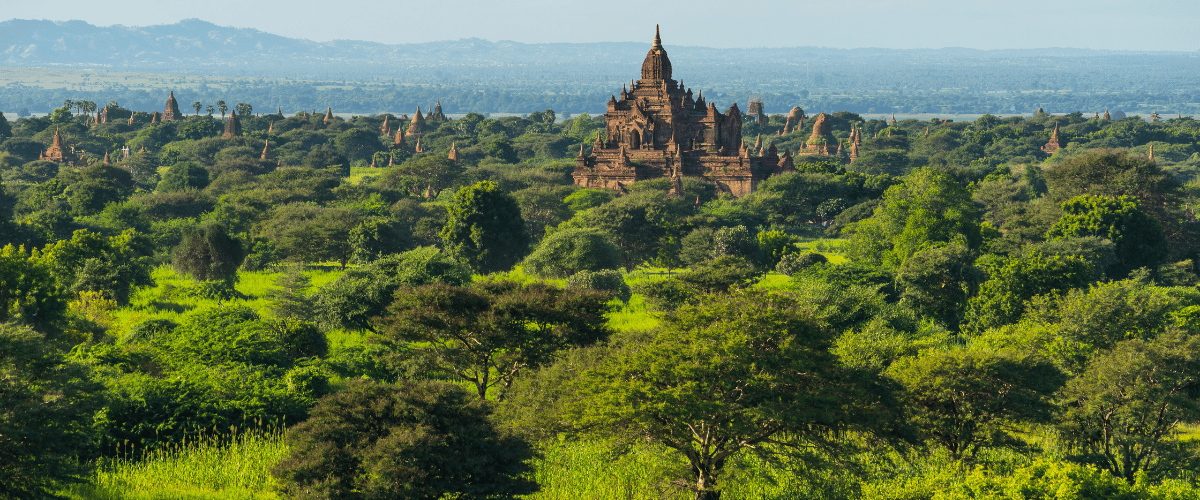
Adventure & Outdoors in Myanmar
Top Cities and What to Do
Jakarta: Fast, Bold, and Buzzing
Give your taste buds a treat by visiting Grand Indonesia for a vending machine-assisted shop or do old-school shopping at Pasar Baru. Grab architectural colonials coupled with entertaining live music at the inviting museums of Kota Tua (Old Town). Grab a signature coffee blend and enjoy SCBD’s skyline from their rooftop cafes.
Yogyakarta: A Center of Culture with a Refreshing Twist
Step into Yogyakarta’s royal past as you explore the Kraton Palace and the enchanting Taman Sari Water Castle. Dive into the thriving art ecosystem surrounding Malioboro and Prawirotaman, where creativity pulses through galleries, street art, and local studios. Epic traditional dance performances at Ramayana Ballet (Prambanan backdrop = epic)
Bandung: Chill Out City of Java
- Indie shops and factory outlets on Jalan Riau
- Café-hopping in Dago and Lembang
- Braga Street: Jazz bars, colonial Vibe, and street murals
Denpasar & Ubud (Bali)
Denpasar: the real bali. The local nightlife, temples, and markets.
Ubud: Artist, Yogi, and chef unite to create a city in the jungle with heavy spiritual undertones.
One of a Kind Urban Experiences
Jakarta art: Macan Museum and graffiti tours around Kemang
Street art in Yogyakarta: Mural poetry painted onto the walls of mundane alleys.
Design in Bandung: Architecture and even alternative comic books.
The vibe of digital nomads in Bali: Canggu’s coworking spaces resemble beach resorts.

FAQ- Urban Culture in Indonesia
Pro Tip
Be sure to download GoJek it’s a must-have travel hack for navigating urban Indonesia, offering everything from transportation and food delivery to massage services and even concert ticket bookings, all in one convenient app
Conclusion: The Cities Are Cultural Breathing Life.
Indonesia That Inspires and Transforms
Indonesia’s cities aren’t just places on a map; they’re living stories waiting to be experienced. Sip strong kopi in Bandung, feel the rhythm of Jakarta’s nightlife, or reconnect with stillness in the lush calm of Ubud. Each moment of urban travel in Indonesia blends tradition, art, and energy in unforgettable ways. You’ll arrive curious and leave inspired because these cities don’t just welcome you, they change you.
Adventure & Outdoors in Myanmar
Intro: Journey into the Wild Side (80 words)
If you’re looking for unspoiled scenery and breathtaking activities, Myanmar is the place to be. In 2025, travelers can still deeply engage with the country’s nature by attempting to reach remote monasteries, trekking through enchanting hills, and paddling across serene lakes. It is a treasure for adventurers who appreciate firsthand immersing themselves in natural beauty. Every path is a scar to this country: each highland, river valley, and wooded trail is waiting to be souvenir laden. Whether you are a vacation Cyclist or a casual walker, this site defines limitlessness.
Top Adventure Destinations
Kalaw to Inle Lake Trek
A 2- to 3-day journey passes through tribal villages, verdant rice paddies, and gentle hills.
Immerse yourself culturally through local family homestays.
Hsipaw & Northern Shan State
Shan and Palaung village treks.
Waterfalls, secret monasteries, and forested paths await.
Putao (Far North)
Most remote treks and Himalayan views in Myanmar’s far northern region.
Perfect for experienced adventurers, particularly from November to February.
Kayaking and Boating
Paddle around Inle Lake or some pirate-level exploring in Myeik Archipelago.
Slow cruise on Irrawaddy River for relaxed scenic cruising.
Other Outdoor Experiences
Climb the towering limestone cliffs of Hpa-An for a thrilling dose of adventure.
Journey deep into the caves of Pindaya and Saddan to discover secret chambers and age-old stories carved in stone.
Hot air ballooning over parts of Bagan or Inle (seasonal: Oct–Mar).
Ethical & Responsible Travel Tips
Hire local guides and community-based tourism.
Stay on marked paths to minimize damage to wildlife areas.
Respectful villager interactions – greet and smile while passing through.
FAQ – Outdoor Travel in Myanmar
Do I need a guide for treks?
In many regions, a local guide is necessary in many areas for safety and cultural connection.
Are trails safe and well-marked?
In popular regions, such as Kalaw and Hsipaw, they are well marked. In areas like Putao, remote planning is required.
What fitness level is required?
The grade of trekking varies from easy to difficult. The Kalaw to Inle trek is moderate, so most people can participate in it.
Did You Know?
Hkakabo Razi, tucked away in Myanmar’s remote northern region, holds the title of Southeast Asia’s highest peak—rarely summited and wrapped in mystery.
Pro Tip
Proper hiking boots, rain gear (even during the dry season), and an adventurous spirit are required. Infrastructure is limited, but the rewards are ample.
Conclusion: Into the Wild Heart: 50 words
More than just a backdrop, Myanmar’s incredible landscape is an invitation to engage with the land, the people, and one’s self. With paddles on serene lakes and hiking through rugged highlands, every adventure is steeped in personal and profound resonance, and curiosity leads to a transformed self.
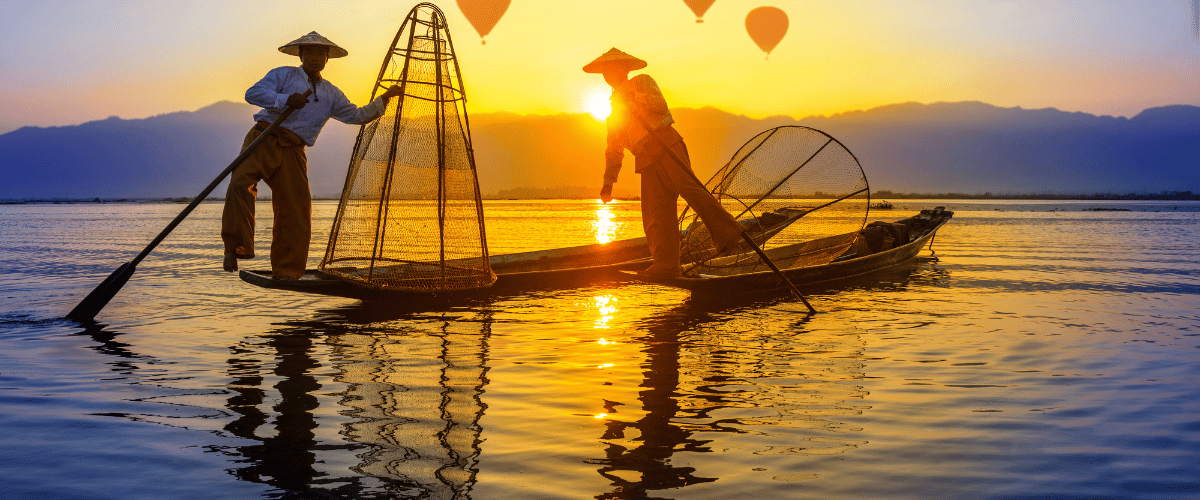
Myanmar’s Secret Towns and Villages
Exploring the Developed City Life
Japan: ‘everything’ goes down here
Don’t miss: team-lab planets, harajuku fashion alleys, shibuya sky rooftop.
Check This Out 2025 New: AI run museums and vr concerts at the neo-shinjuku district.
Durchschnitt Shimokitazawa local tip Live jazz at alley pubs at secondhand stores
Osaka The hub of street culture
Takoyaki battles with record stores manzai standup
Orange Street (hypewear + latte art) insta worth
Buy an osaka amazing pass for discount secret
Fukuoka Coastline of Creativity
What’s Hot designer ramen stalls and open air music fests art harbor over their murals illustrated on the sea side.
Daikanyama’s hidden boutiques is Japan’s answer to Brooklyn
Manga Musuems In Kyoto where doodles merge with history.
Retro cocktail lounges as we know Sake in Osaka meets Mario Kart.
Durchschnitt Shimokitazawa local tip Jazz performances in alley pubs and thrift stores
Shibuya stay for calm wander Koenji Ebisu local districts explore

FAQ- Urban Culture in Indonesia
Pro Tip
Myanmar’s Secret Towns and Villages
Intro: Off the Beaten Path, Into the Heart (80 words)
In Myanmar, away from the well-visited cities and temples, lie the real gems of the country – serene villages and lesser known towns that are steeped in culture, kindness, and natural beauty. Travelers looking for genuine connection will uncover them in bamboo huts, tucked away mountain valleys and riverside hamlets. These hidden towns and villages provide more than just picturesque views. They offer life stories, simplicity, and tea-sipping moments in the highlands that turn into lasting memories.
Top Discreet Locations
Nong Khiaw (Shan State)
Quaint riverside village encircled by limestone hills
Starting point for hiking to nearby villages such as Muang Ngoi and Ban Sop Houn
Hsipaw (Northern Shan State)
Quiet town with a royal past, offering trekking routes
Discover the charm of Shan culture through serene villages, cascading waterfalls, and the historic residence of the final Saopha ruler.
Putao (Kachin State)
Isolated northern town, gateway to the Himalayas in Myanmar
Great for trekking and birdwatching, and cultural encounters with local tribes
Chin State Villages
Encounter face tattooed women and ancient customs
Climb Mount Victoria and discover Kanpetlet or Mindat villages
Mrauk U (Rakhine State)
Temple city with overgrown ruins and Rakhine villages less visited by tourists
Ferry rides, remote setting, and striking architecture
Why Go Rural?
Cultural authenticity: bear witness to living traditions, crafts, and ceremonies
Community tourism: help sustain the economy through homestays, guided walks, and more
Natural immersion: endless forests, rivers, and rice paddies
FAQ – Village Travel in Myanmar
Is it generally safe to explore Myanmar’s countryside?
Yes, but ensure to check travel alerts. Avoid less traveled trekking paths and hire local guides.
What should I bring?
Respect for local traditions, cash for the region, a translation app, modest clothing, and a basic medical kit are essentials.
Are there homestays?
Yes. They are available in Kalaw, the Inle region, Hsipaw, and Chin State. Ensuring visits through a local agency guarantees respectful and legal tourism.
Did You Know?
In Chin villages, elders recount history through songs.
Pro Tip
Bring photos from backhome, or postcards, as gifts. These serve as excellent conversational aids in places with little to no internet access.
Conclusion: The Soul of Myanmar (50 words)
Remote villages in Myanmar are not mere destinations; they hold centuries of stories. In these tranquil places, you’ll discover profound generosity and tenacity. Trade your Wi-Fi for a sense of awe; Myanmar’s concealed villages embrace and receive you with boundless hospitality and heartfelt warmth.
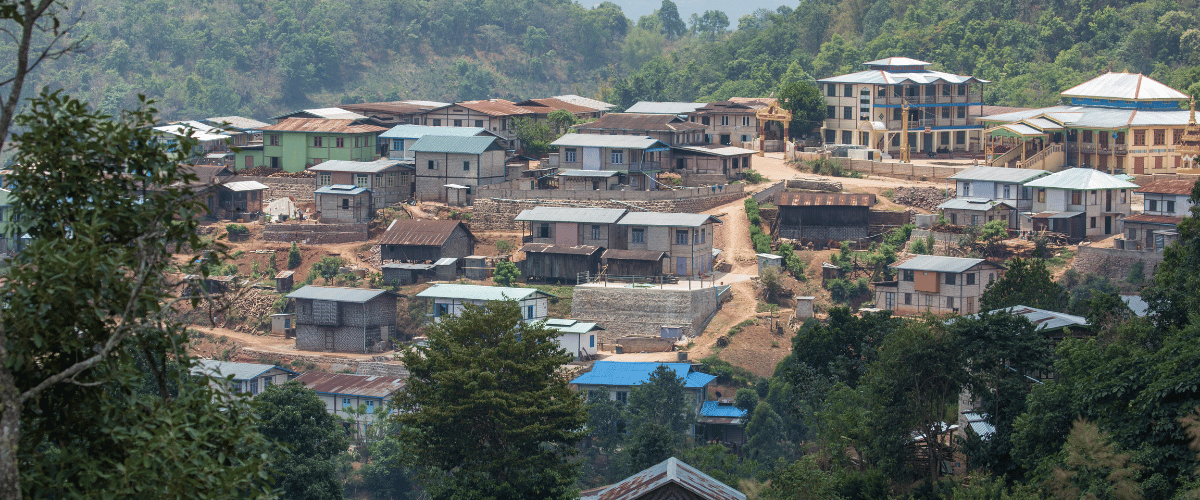
Festivals & Events In Myanmar
Exploring the Developed City Life
Japan: ‘everything’ goes down here
Don’t miss: team-lab planets, harajuku fashion alleys, shibuya sky rooftop.
Check This Out 2025 New: AI run museums and vr concerts at the neo-shinjuku district.
Durchschnitt Shimokitazawa local tip Live jazz at alley pubs at secondhand stores
Osaka The hub of street culture
Takoyaki battles with record stores manzai standup
Orange Street (hypewear + latte art) insta worth
Buy an osaka amazing pass for discount secret
Fukuoka Coastline of Creativity
What’s Hot designer ramen stalls and open air music fests art harbor over their murals illustrated on the sea side.
Daikanyama’s hidden boutiques is Japan’s answer to Brooklyn
Manga Musuems In Kyoto where doodles merge with history.
Retro cocktail lounges as we know Sake in Osaka meets Mario Kart.
Durchschnitt Shimokitazawa local tip Jazz performances in alley pubs and thrift stores
Shibuya stay for calm wander Koenji Ebisu local districts explore

FAQ- Urban Culture in Indonesia
Pro Tip
Festivals & Events In Myanmar
Intro: Celebrating Devotion, Tradition and Identity (80 Words)
Festivals in Myanmar are a mixture of culture and deep spirituality. They celebrate Buddhism as much as they do the local customs and traditions. In 2025, international travelers can witness for themselves the country’s celebrations and festivals through its music, parades, rituals, and feasts. From Thingyan where water splashes symbolically during the festivity to the full moon candle rituals, each event is celebrated deeply with devotion and has its roots in Buddhism.
Top Most Festivals To Experience
Thingyan (Water Festival) – Mid-April
Myanmar’s New Year Celebrations consist of lavish street performances, along with water fights and music initiated by locals to mark the beginning of the new year.
Most notable are the festivities in the capital region; hence, the major events are concentrated in Yangoon, Mandalay and Naypyidaw.
Tazaungdaing Festival (Festival of Lights) – November
Full Moon celebrates its devotion by offering donations coupled with light during temple services which shine from the temples over the believers.
Festival time in Taunggyi brings vibrant fire balloon launches and spirited robe-weaving contests that light up the town with color and tradition.
Shwedagon Pagoda Festival – March
Located in Yangon, it is celebrated at the sacred Shwedagon Pagoda and includes offering zingy dishes followed by cultural performances and chantings.
Woven lights are hung at the temples while generous donations are given by the devotees.
Phaung Daw Oo Pagoda Festival (Inle Lake) – September-October
During sep andoct, major activities include longboat racing and royal barge processions on inle lake.
During the previous 18 days, the statues have been marched through the village and will continue to do so for 18 days.
Thadingyut (Festival of Lights) – October
It marks the end of the Buddhist Lent, a sacred period of retreat, reflection, and spiritual discipline.
Streets and houses are currently decorated with lights and people give respect to elders.
Other Local Festivals
Waso Full Moon: Commencement of Buddhist Lent.
Ananda Pagoda Festival (Bagan): Contains traditional dramas, local markets, and religious activities.
Independence Day (Jan 4): Celebration with national parades and commemoration of independence from colonial domination.
General Questions and Answers – Attending Festivals in Myanmar
Do I need to book in advance?
Yes. Festivals such as Thingyan and Tazaungdaing tend to get booked long in advance — hotels and transport require planning well ahead of your visit.
What should I wear?
Modest clothing is preferable. During temple visits, be sure to have a longyi or sarong.
Can tourists participate?
Definitely! People are friendly and will encourage participation, so long as you do not mind observing before taking part.
Did You Know?
An eye-catching (and noisy) tradition is the launching of gigantic handmade firework-filled balloons at Taunggyi’s Tazaungdaing celebration.
Pro Tip
Temple fairs are an excellent place to buy palm sugar. During festivals, you can find mont lone yay paw at stalls and they can be enjoyed during Thingyan.
Conclusion: The Joy of Shared Celebration (50 words)
Festivals in Myanmar shine a light on deep-rooted faith and strong family ties, celebrating love and happiness in their most genuine form. If you time your visit with a celebration, you get to savor the rhythm, warmth, and taste of togetherness while cherishing priceless memories of a culture that celebrates alongside one another year after year.
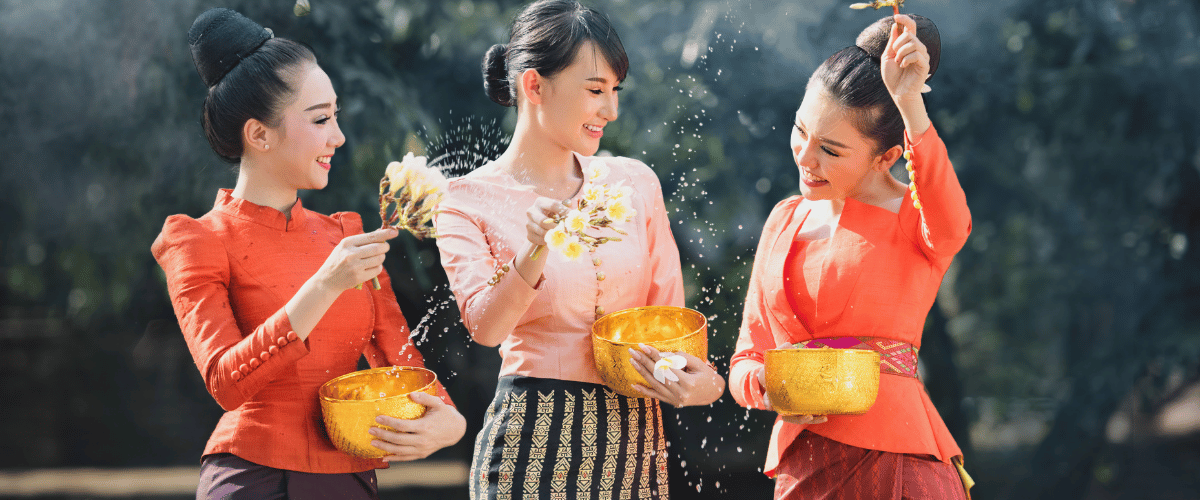
Pop Culture & Entertainment in Myanmar
Exploring the Developed City Life
Japan: ‘everything’ goes down here
Don’t miss: team-lab planets, harajuku fashion alleys, shibuya sky rooftop.
Check This Out 2025 New: AI run museums and vr concerts at the neo-shinjuku district.
Durchschnitt Shimokitazawa local tip Live jazz at alley pubs at secondhand stores
Osaka The hub of street culture
Takoyaki battles with record stores manzai standup
Orange Street (hypewear + latte art) insta worth
Buy an osaka amazing pass for discount secret
Fukuoka Coastline of Creativity
What’s Hot designer ramen stalls and open air music fests art harbor over their murals illustrated on the sea side.
Daikanyama’s hidden boutiques is Japan’s answer to Brooklyn
Manga Musuems In Kyoto where doodles merge with history.
Retro cocktail lounges as we know Sake in Osaka meets Mario Kart.
Durchschnitt Shimokitazawa local tip Jazz performances in alley pubs and thrift stores
Shibuya stay for calm wander Koenji Ebisu local districts explore

FAQ- Urban Culture in Indonesia
Pro Tip
Pop Culture & Entertainment in Myanmar
Intro: A New Beat, A Growing Voice (75–80 words)
The 2020s are witnessing the rise of Myanmar’s popular culture. It is taking shape on the foundations of its unique traditions while rapidly developing with the rest of the world through music, cinema, social media, and fashion. In 2025, Myanmar’s vibrant and youthful entertainment industry, ranging from TikTok influencers to melodious songs on the radio, will be brimming with life. Despite these trying times, local creatives continue to draw from global trends as well as homegrown identity. For modern day travelers, this marks an exciting change to witness through art, music, and media.
Music & Performance
Burmese Pop & Rock
Ah Moon and Saw Lah Htaw Wah are popular for their traditional K-pop, hip-hop, and reggae fusions.
Café performances in Yangon and Mandalay are a great way to encounter innovative and emerging talent firsthand.
Modern Innovations Alongside Tradition
Performances that incorporate the saung-gauk and pat waing are fusion within the genre of traditional Burmese music.
Look out for shows where EDM is paired with traditional dance or acoustic guitar.
Theatre & Puppet Shows
Traditional marionette performances remain beloved by both locals and visitors alike.
Mandalay is famous for these artistic traditions and their continued preservation.
Television, Cinema, and Contemporary Trends
Burmese Dramas & Films
Local screens are flooded with romantic dramas and lighthearted comedies.
Many of these films explore family dynamics alongside the importance of moral values and Buddhism.
Streaming & Social Networking
In Myanmar, Facebook, TikTok, and youtube are the biggest platforms. Influencers share beauty and lifestyle tips, travel vlogs, and stand-up comedy sketches.
Some short films from Myanmar as well as independent music videos are gaining popularity abroad.
Youth Culture & Fashion
Streetwear includes longyi skirts — sneakers under sarongs have become trendy.
Urban youth are keen on dancing, anime, and Korean beauty products.
Instagram-friendly design makes cafes popular for photo shoots.
FAQ: Engaging With Contemporary Culture
Are local music events accessible?
Absolutely, in Yangon. Look for posters or check with your hotel for live shows or art venues.
Are local shows in English?
Most are conducted in the Burmese language, although the performances—especially the dances and music—are sufficiently universal to be appreciated by all cultures.
Can tourists attend film screenings or concerts?
Sure! Just check the local bulletin boards or social media for the most recent listings.
Did You Know?
Myanmar has its own “The Voice” franchise and other talent competitions that have enabled aspiring singers and even stand-up comedians to jumpstart their careers.
Pro Tip
Make sure to visit art cafés or community theaters. They are wonderful places to find events and screenings as well as poetry slam sessions.
Conclusion: The Pulse of a Nation Emerging (50 Words)
The entertainment industry of Myanmar continues to develop and at the same time portrays the enduring spirit and creativity of its people. Art, music, and other forms of media, the youth are actively shaping a more contemporary cultural narrative. Exploring the tales and ambiances reveals a vibrant and ever-changing.
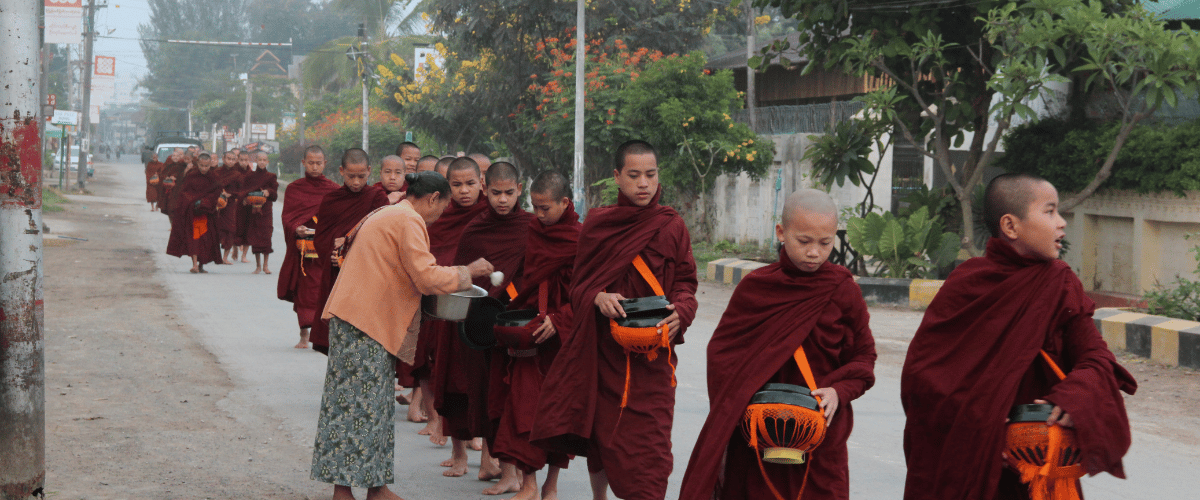
Shopping & Souvenirs in Myanmar
Exploring the Developed City Life
Japan: ‘everything’ goes down here
Don’t miss: team-lab planets, harajuku fashion alleys, shibuya sky rooftop.
Check This Out 2025 New: AI run museums and vr concerts at the neo-shinjuku district.
Durchschnitt Shimokitazawa local tip Live jazz at alley pubs at secondhand stores
Osaka The hub of street culture
Takoyaki battles with record stores manzai standup
Orange Street (hypewear + latte art) insta worth
Buy an osaka amazing pass for discount secret
Fukuoka Coastline of Creativity
What’s Hot designer ramen stalls and open air music fests art harbor over their murals illustrated on the sea side.
Daikanyama’s hidden boutiques is Japan’s answer to Brooklyn
Manga Musuems In Kyoto where doodles merge with history.
Retro cocktail lounges as we know Sake in Osaka meets Mario Kart.
Durchschnitt Shimokitazawa local tip Jazz performances in alley pubs and thrift stores
Shibuya stay for calm wander Koenji Ebisu local districts explore

FAQ- Urban Culture in Indonesia
Pro Tip
Shopping & Souvenirs in Myanmar
Intro: Alongside Meaningful Finds, Local Treasures (80 words)
Edited Shopping brings to life culture and craftsmanship through diverse items and specialties. Souvenirs such as textile goods and lacquerware are woven into the history and narration of their origins. Tourists will uncover Myanmar’s artistic heritage as they browse through the lively street stalls or calm boutique spaces. Shopping here in 2025 provides more sustainable and able focused options, which is best for travelers seeking meaningful, memorable items to bring back home.
Top Souvenirs to Look For
Lacquerware (Bagan Specialty)
Elaborately carved containers and bowls made from wood adorned with complex patterns and gold foiling.
Ideal as gifts or to enhance the aesthetic of ones living space.
Longyi (Traditional Wrap Skirt)
Worn by both genders, available in different colors and styles.
Offered for custom tailoring at markets.
Handwoven Textiles
Skilled artisans from the Chin and Shan communities craft vibrant scarves and shawls, each piece reflecting their rich cultural heritage.
Often hand-made and naturally dyed.
Jade and gemstones
Rubies and jade are among the worlds leading mined products in Myanmar.
Ensure purchasing only from licensed retailers to evade replicas.
Handcrafted Puppets & Carvings
Traditional marionette puppets aren’t just a cherished form of performance art—they also make for meaningful keepsakes. When choosing one, pay attention to the movable limbs and the intricate hand-painted designs that bring each puppet to life.
Food & Consumables
Laphet (fermented tea leaves) is an acquired taste, but one of the specialties from Burma.
Shan State’s local coffee is becoming popular around the world.
Pickled mango, tamarind candies, and some snacks made from coconuts are wonderful giftable food items.
Best Shopping Spots
Bogyoke Aung San Market (Yangon)
It is a must stop for visitors as it has an immense collection of crafts, gems, and textiles.
Mandalay Jade Market
Even window shoppers will find this market interesting as local buyers and sellers haggle and scrutinize prized stones.
Local Villages
Purchase directly from the workshops to assist artisan communities, particularly around Inle Lake, Bagan and Hsipaw.
FAQ – Shopping in Myanmar
Is it possible to haggle at the markets?
Of course! It is welcomed, particularly at tourist hotspots. Lower your opening offer, and be polite but firmly civil in your negotiation.
Is it allowed to take jade or gemstones out of Myanmar?
Yes, but like any precious item, remember to validate customs requirements and keep an official receipt handy.
Is cash preferred?
Yes, mainly in markets. Cities have ATMs, but rural areas are mostly cash only.
Did You Know?
Myanmar’s lacquerware is made using up to twenty layers of resin which are each painstakingly dried and polished over weeks.
Pro Tip
Always seek fair trade certification or inquire about the provenance of the product; many artisan cooperatives enjoy discussing their history.
Conclusion: Bring Home A Fragment of Myanmar (50 words)
Purchasing items in Myanmar makes you feel one with the country’s spirit and history, be it a handwoven scarf or a flavorful tea blend. These gifts are more than mere items; they represent fragments of vibrant culture. Remember to shop intentionally, aid local craftspeople, and cherish affordable relics from your travels.
